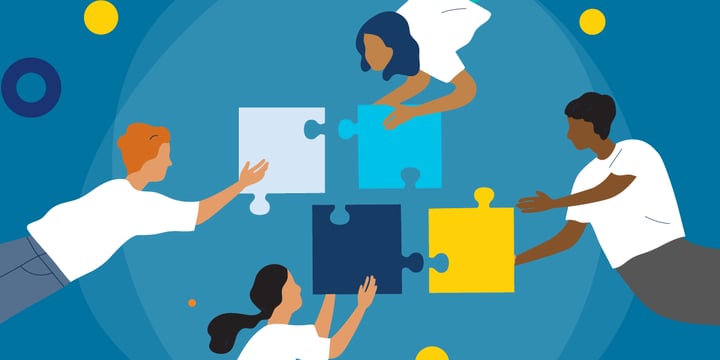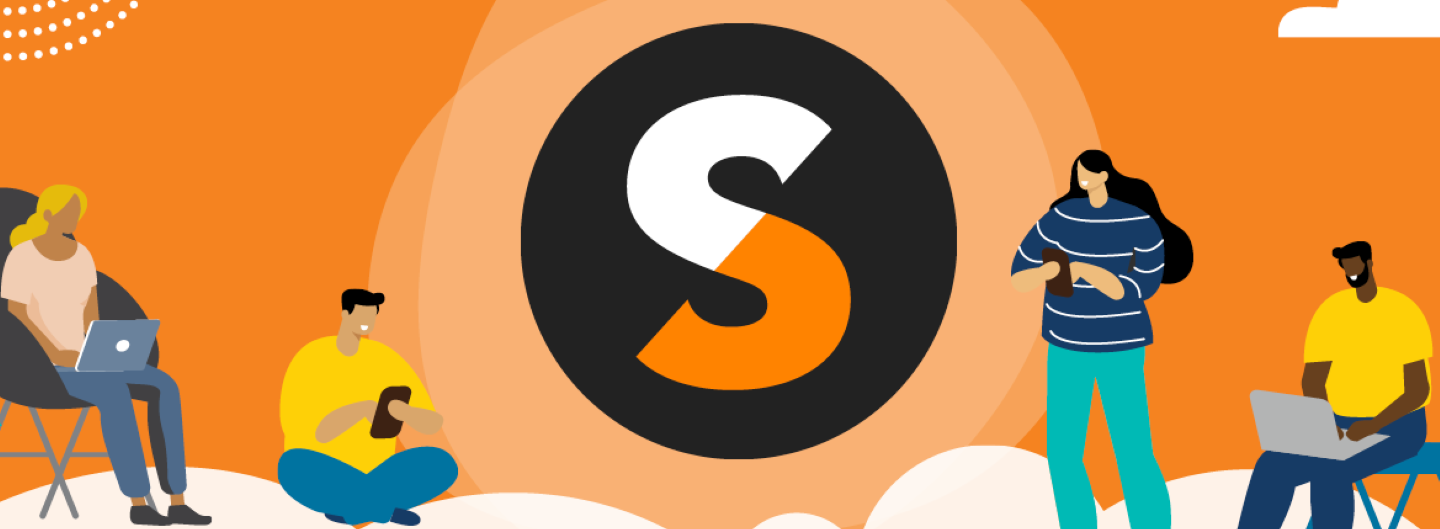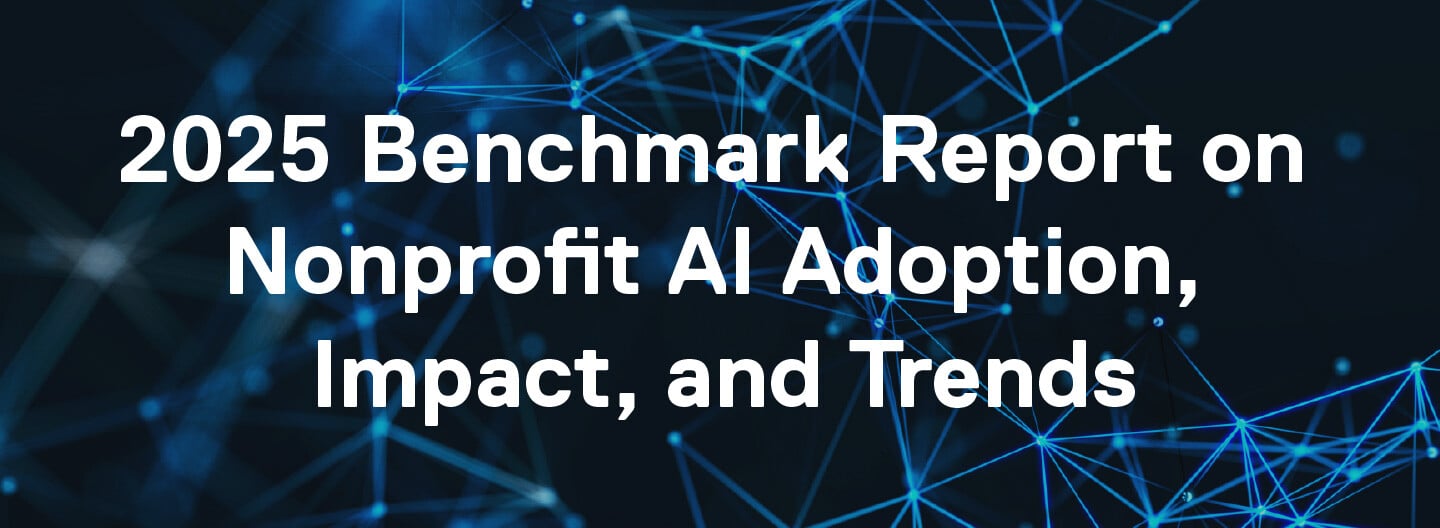April commemorates Autism Acceptance Month, kicked off with World Autism Awareness Day on April 2 as observed by the United Nations. This year, we are honoring Autism Acceptance Month by sharing some best practices and resources on how to best support neurodiverse individuals in your workplace and wider community. Uplifting diversity, equity, and inclusion remains an overarching goal for many organizations. However, fostering a truly inclusive workplace that promotes equity and highlights the value of diversity can be harder than we often anticipate.
How can we, as a network of mission-driven organizations, develop concrete strategies to champion neurodiversity within our professional and personal lives? In this post, we'll go over a few best practices to incorporate into your day-to-day operations at your nonprofit in order to do just that.

Educate Yourself and Others on Neurodiversity and Disability Justice
Advocacy starts with understanding. In order to better support neurodiverse colleagues in the workplace, it is essential to educate yourself and your colleagues on the many traits encompassed under neurodiversity. It is also important to recognize how neurodiversity advocacy fits into the wider Disability Justice Movement and disability rights advocacy at large.
Disability rights and accessibility protections are often what first come to mind in disability advocacy, but they don’t tell the full story. The Disability Justice Movement builds upon disability rights and accessibility advocacy with the addition of an intersectional lens. It centers disability activism around uplifting and empowering disabled individuals facing intersectional oppression including BIPOC, queer, trans, immigrant, homeless, and incarcerated people with disabilities.
Disability justice and concepts surrounding neurodiversity and intersectionality are ever-expanding along with the movements they stem from. There is always new discourse to explore, providing an opportunity to educate yourself today and to come back to the discourse later on to see how it changes. Below, you'll find a list of terms for further exploration and self-education. Take a moment to research and familiarize yourself with these terms, share with your colleagues, and revisit them throughout your allyship journey to renew your understanding.
- Neurodiversity
- Neurodivergence
- Types of neurodivergence
- The autism profile
- Disability rights
- Intersectionality
- Person-first language and identity-first language
The evolution of the Disability Justice Movement into where it stands today is a reflection of how intersectionality has shaped many contemporary movements including the Black rights and feminism movements. Adopting an intersectional lens goes beyond social movements, though. It shapes the way we engage with people every day, including those with neurodiversity and other marginalized identities. Educating yourself and leading conversations with others about neurodiversity and disability justice from an intersectional lens are great first steps to being an ally and advocate.
Implement Supportive Workplace Best Practices
People who are neurodivergent can significantly benefit from simple accommodations, some of which are already general workplace best practices. Like others, those with neurodiversity may have work strengths that are amplified when they are in a comfortable work setting that suits their needs.
For example, some traits that many people with autism share are trustworthiness, reliability, attention to detail, ability to focus, innovation, and logical thinking. However, these strengths can often be overshadowed in ambiguous or high-stimulation settings that may be triggering for those with autism. Implementing accommodation practices can bridge these barriers and provide a better opportunity for these colleagues to shine.
Four Ways to Communicate More Effectively with Colleagues with Autism
Below, you'll find some tips around how to communicate with your neurodivergent colleagues, particularly helpful for working with colleagues with autism.
- Let them know exactly what you need and ask them what they need. Be very clear and specific about necessary tasks. Daily lists that order tasks by priority can be a really helpful tool. Many people with autism will have an idea of what works best for them, especially if they were diagnosed in childhood. Give them an opportunity to tell you what accommodations suit them.
- Send emails about expectations. It's a good idea to send emails to let them know what you want them to do. This will give them something to refer back to and give each of you a paper trail for expectations.
- Speak in plain language. Most people on the spectrum take things very literally. This means you may have to choose your words more carefully when you explain a task. Metaphors, idioms, and expressions may be confusing to your employee, but the same is true for directions that are vague or ambiguous.
- Define expectations that may seem obvious. You may take some workplace expectations for granted, but it may not be so for colleagues with autism. For example, if you expect employees to dress in business casual, tell them exactly the type of clothing you would like them to wear.
Four Ways to Support Colleagues with Autism to Feel More Socially Comfortable at Work
There is also some nuance between the best practices around effectively communicating with neurodiverse colleagues versus making them feel more comfortable socially. Here are four more strategies to keep in mind.
- Give them the option to not participate. Allow them to make the decision, but things like team-building activities or team-based training may be too much for someone with sensory sensitivities.
- Offer less pressure to attend group briefings. If it isn't totally necessary for them to attend a group meeting, give them the option of opting out.
- Make parties optional. Christmas parties, summer events, and retreats may not be beneficial for everyone. Always make people feel welcome to come but avoid making it a requirement.
- Work closely with human resources (HR). Have a key person in HR who can provide support. Have someone trained to understand autism that your colleague can reach out to when they have a challenge at work.
Be an Ally to Neurodiverse Colleagues and Community Members
To close, here are some key takeaways on how to be the best ally you can be:
- Ask people with neurodiversity what they need to best work with you.
- Recognize that someone may be open to you about their neurodiversity or that of a loved one, without being open to others. Keep things confidential unless you have permission to do otherwise.
- Understand and embody equity over equality. Implementing accommodations may create differential work practices in order to create equity, and that’s okay.
Most importantly, if someone reveals their neurodiversity to you, don't see them as a different person. They still are themselves, possibly now more than ever. We, as a society, have both an opportunity and a responsibility to foster inclusive workplaces where people with neurodiversity can thrive.
Additional Resources
- Read more about Building a Disability-Inclusive Nonprofit Workplace.
- Find out How Remote Work Zooms In On Workplace Inequalities at Nonprofits.
- Discover How Tablets Can Make Computing More Accessible for Everyone.
- In this webinar, get 5 Tips to Successfully Launch a Diversity Initiative at Your Nonprofit.
Top photo: Shutterstock







